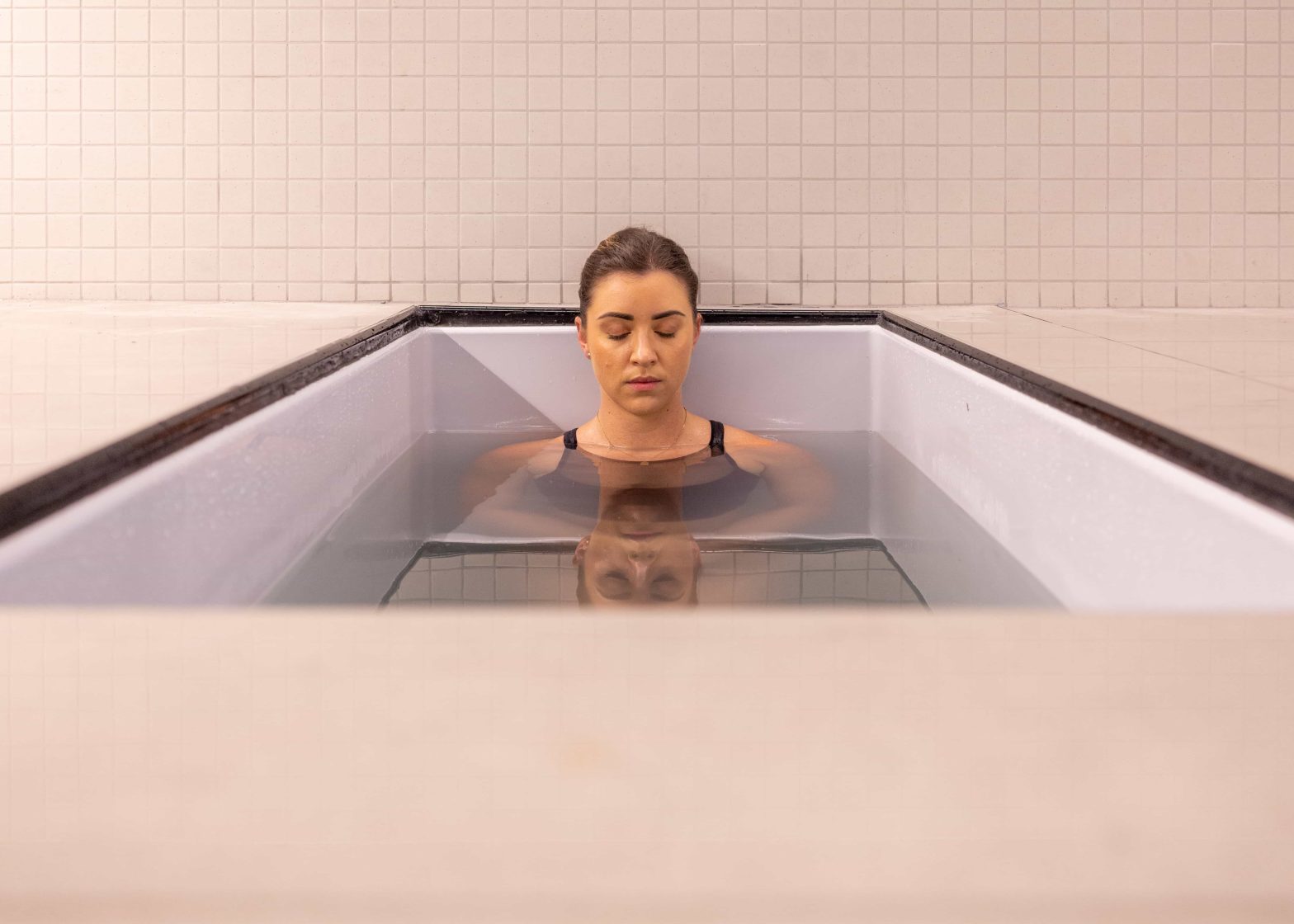Both of these wellness practices are effective and popular, but which is best for you? Keep reading below for everything you need to know before booking a session with either.
Ice bath vs sauna: what’s the difference?
Ice baths
Ice baths involve you sitting in a tub full of cold water as chilly as 10 degrees, with water covering your entire body right up to your neck. Most ice baths don’t last longer than 10 to 15 minutes, but you can choose to stay in for as little time as you’re comfortable with. The benefits of cold water immersion begin after just a few minutes, so listen to your body and don’t push yourself to the point of intense pain. This will only lead to counterproductive effects.
Benefits of ice baths
Can be beneficial for treating muscle injuries
Ice baths have shown promise in treating muscle injuries and strains after exercise, and are especially fruitful in sports medicine and athletic training. For the best results, you should use ice baths in conjunction with warm water, otherwise known as contrast therapy, as this can increase blood flow and oxygenation to the muscles, reducing swelling and promoting better healing and quicker recovery. Certain research has been conducted to support this, although more studies would be needed to back the initial findings up.
Reduced inflammation
When your body is shocked with an intense temperature change, like an ice bath offers, the first point of action will be to get your blood vessels as close to the core of your body as possible. They constrict into your body, which makes it much easier for the blood to be drenched in oxygen and nutrients that can be delivered to the rest of your body. Once your temperature begins to rise again after the bath, your muscles will get this oxygen and nutrients to help fight off inflammation and speed up recovery. Research has even noted that ice baths can reduce delayed-onset muscle soreness, and a big reason for this is the reduced inflammation your muscles have to deal with.
Can help reduce pain by slowing down nerve signals
Voluntarily stepping into a cold water pool might not seem like the best way to relax – in fact, it might actually sound downright painful! But in reality, once you get over the initial shock, it can help relieve pain by slowing down the nerve conduction in your body. This is the speed the pain signal travels through the nervous system and gets to your brain, which is when you’re notified of the pain. A study found that nerves become less effective at transmitting when exposed to extremely cold temperatures. This is the action that lets your brain know you’re in pain, so slowing this down can prevent you from being alerted to the issue. Clever, right?! Cold water can also temporarily numb the affected area, which is another effective method of natural pain relief.
Saunas
A sauna is a closed room typically heated to between 70 and 100 degrees C (158 to 212 degrees F). Traditional Finnish saunas usually use dry heat with a lower humidity of between 10 and 20 percent, but you can also find saunas that use wet heat with higher humidity levels. The sauna raises your skin temperature and causes you to sweat. Some people can lose as much of a pint of sweat in just a short time while sitting in a sauna!
Benefits of saunas
Instrumental in helping the body to relax
Sauna bathing is an amazing way to relax the body and allow your muscles to let go of any tension they’ve been holding onto. A cross-sectional study explored this, finding that people who participated in sauna-bathing (particularly those living in Finland, Australia, and the United States) use saunas primarily for relaxation over any other health benefit. They also report several beneficial side effects, such as mental well-being and better sleep, hinting that saunas can be a wonderful addition to your self-care routine.
Improved cardiovascular health
There has been some evidence to suggest that extended, regular sauna use can improve heart health. One study looked at repeated sauna therapy in participants with congestive heart failure. They remained in a 60-degree sauna for 15 minutes, with the results showing that it improved hemodynamic parameters, clinical symptoms, cardiac function, and vascular endothelial function. This is an amazing benefit for people suffering from cardiovascular health problems, but always talk to your doctor before beginning treatments such as sauna use or ice baths.
Potentially reduced risk of Alzheimer’s
Research has begun looking at the potential benefits of using sauna bathing to reduce Alzheimer’s risk and symptoms. Researchers from Finland published the results of their 20-year study which showed a link between sauna use and lower risk factors of dementia and Alzheimer’s. This study followed 2,315 healthy men as participants, all from the ages of 42 to 60.
Those who used the sauna 2 to 3 times a week were 22 percent less likely to get dementia and 20 percent less likely to develop Alzheimer’s than those who didn’t use the sauna at all. Participants who used the sauna four to seven times a week were 65 percent less likely to develop Alzheimer’s than those who didn’t. While this is a promising study, more research would need to be conducted to back it up.
Ice baths vs saunas: which is best for you?
Ice baths and saunas are like night and day – one heats your body up while the other cools it down. Choosing which is best for you entirely depends on your personal situation and what you want out of them.
Ice baths are excellent for athletes thanks to how they can reduce muscle soreness and speed up the recovery process. They’re also great for mental clarity and a lot of people take ice baths in the morning to start their days off right.
On the other hand, saunas are best for relaxing and mental health, but they also come with several potential health benefits that can improve your overall well-being.
If you can’t decide which is best for you, we have a fun idea – why not try both? Using ice baths and saunas together is called contrast bathing or contrast therapy, and it’s where you put the body into two very different temperatures in order to shock it. There are several benefits to this, including less muscle soreness and fatigue, decreased pain and swelling, and reduced lactic acid buildup after exercise.
Frequently asked questions
Ice baths vs saunas: which is healthier?
Both ice baths and saunas are considered healthy and come with significant benefits, so it all depends on what you want out of your session. However, ice baths do tend to shock the body quicker as the temperature change is more instantaneous, so it might not be the best option for everyone. If you have any pre-existing health conditions, we highly recommend talking to a doctor before starting regular ice baths or sauna sessions to make sure it’s a healthy option for you.
Is it safe to use saunas and ice baths every day?
Again, this all depends on your personal situation and health. Many people use ice baths and saunas every day with no issues, but the sudden change in routine might put more stress on your body if you’re not used to it. Just like starting exercising every day from nothing can put more strain on your body than its benefits, going too hard too quickly with ice baths and saunas can have a similar effect. We recommend starting off slow with two or three sessions a week and building up your tolerance until you’re happy with the frequency of your usage.
Final thoughts
Ice baths and saunas are two huge practices in the wellness community, and it’s not difficult to see why when you consider their benefits. Ice baths are amazing for mental clarity and muscle recovery post-exercise, while saunas can improve relaxation, tension, skin health, and maybe even reduce the risk of heart disease and dementia. To decide which is best for you, we recommend considering what you want most from each session and seeing how each practice’s benefits hold up. Or, why not get the best of both worlds and try contrast bathing?




